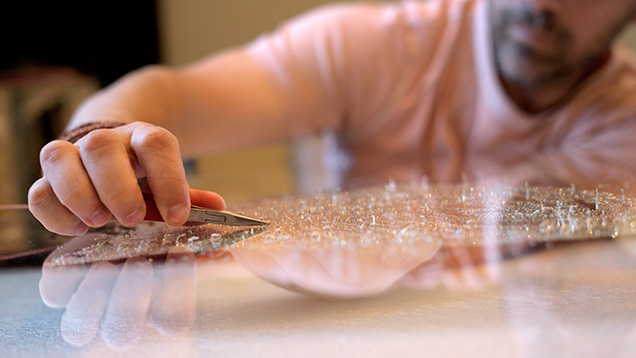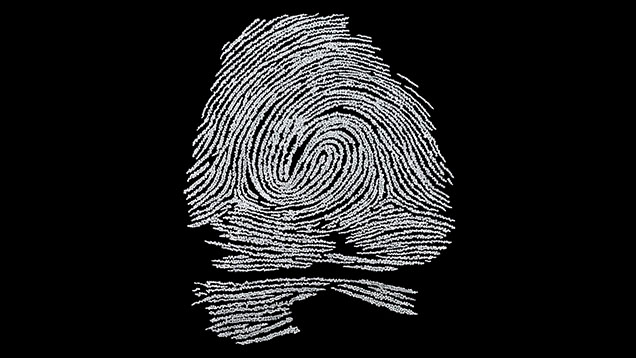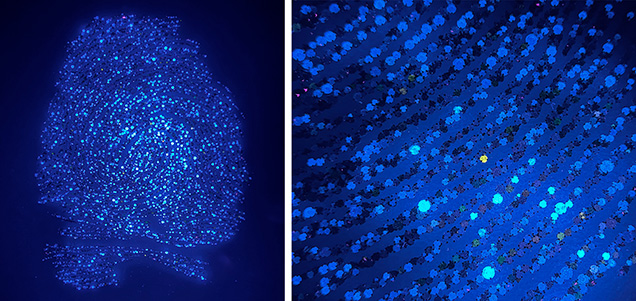“Out of the Darkness” …and Into the Light of Diamond Fluorescence


GIA’s Carlsbad laboratory recently had the opportunity to examine “Out of the Darkness,” a diamond art piece created in 2021 by South African artist Johnathan Schultz (figure 1). This unique design hosting 9,225 diamonds, totaling just over 895 carats, is laid out as a reproduction of Nelson Mandela’s fingerprint (figure 2). The representation measures approximately 20 × 15 in. (51 × 38 cm). Schultz incorporated gold and diamonds in the piece as an homage to some of his home country’s most valuable resources. According to the artist, all of the diamonds are round brilliants with G–H color and VS or better clarity. Each was mounted in a white gold martini setting with the posts removed. The mounted diamonds were then soldered together to produce the ebbs and flows of the individual lines in the fingerprint. Using a few carefully selected posts that were left in place, the strands were attached to clear acrylic in just the right pattern to replicate one of Mandela’s fingerprints preserved from his 1962 arrest.
While the work itself is extraordinary and among the largest diamond art pieces ever made, it also provided GIA with an excellent opportunity to employ testing and instrumentation in rare and challenging ways. Testing small mounted diamonds to determine if they are natural or laboratory-grown is never easy, but when attached in such large numbers in a fragile and valuable art piece, the challenge is magnified. Using the flexible instrument probe of the GIA iD100, the subset of diamonds examined were identified as natural. The iD100 uses the fluorescence properties of natural diamonds to accurately and conclusively determine their natural origin.

During testing, Schultz was introduced to a different aspect of his art: the beauty of diamond fluorescence. A handheld long-wave LED ultraviolet light revealed the array of color hidden in the fingerprint produced by the fluorescence of the diamonds (figure 3). While mostly blue due to nitrogen atoms in the diamond structure, the diamonds’ fluorescence colors also included some yellow, orange, pink, whitish, and greenish glowing hues. The combination made for a spectacular, almost night-sky appearance that seemed to inspire creative ideas for his next endeavor with diamonds.
Using innovative technology and expertise, we were able to not only identify the nature of the diamonds in this art piece but also offer the artist a new perspective, showing that the beauty of diamond is further enhanced by the science of diamond.



